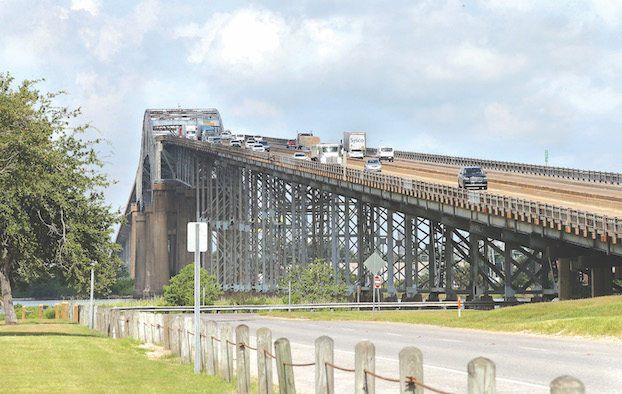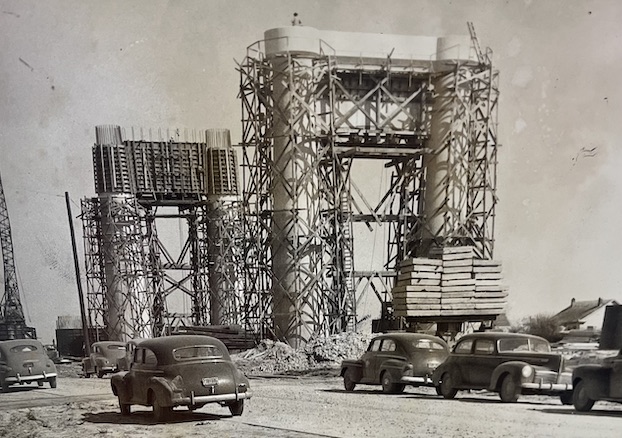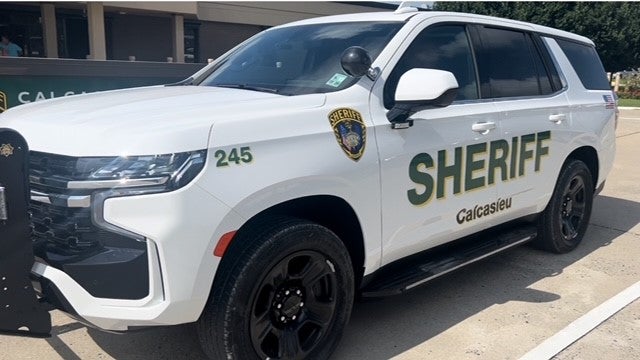More details about proposed I-10 bridge: Tolls will be collected for up to 50 years
Published 7:14 am Friday, July 28, 2023

- (Donna Price / American Press)
A meeting will be scheduled in the next few months to give the public the opportunity to discuss the aesthetics of the new Calcasieu River -Interstate 10 Bridge. In August, the project, including toll rates, will go before the Legislative Joint Transportation Committee subsequently for final review and approval. Local state Reps Les Farnum and Phillip Tarver have been vocal about their opposition to a toll, but no one local is on that committee.
Gov. John Bel Edwards and Louisiana Department of Transportation and Development Secretary Eric Kalivoda announced Tuesday the state has selected Calcasieu Bridge Partners (CBP) for negotiations for the $2.1 billion public-private partnership project
The project is a 5.5-mile corridor going from near Ryan Street in Lake Charles to the Interstate 210 and I-10 interchange on the west side of Lake Charles.
In addition to a new bridge and approaches, the project includes the interstate roadways and ramps, the I-10 service roads, and interchanges at PPG Drive, Sampson Street, and North Lakeshore/Ryan Street that connect the interstate to state roads and local streets. Sampson Street will be elevated over the railroad tracks to eliminate blockages from trains.
“DOTD received two proposals for the project in June and after thorough technical and financial evaluation, CBP had the best overall value to the public,” said John Guidroz, District 07 DOTD spokesperson.
Toll rates will vary based on vehicle type and whether or not the vehicle uses a reduced rate toll tag. A local auto with a tag will pay 25 cents. A large truck with a toll tag will pay $12.50. Trucks without a toll tag will pay $18.73, rates that the Louisiana Motor Transport Association says will disproportionately burden the trucking industry. Association leaders have asked truckers and other Louisiana residents to contact their representatives.
“Tags will be scanned automatically when a driver passes an unobtrusive toll gantry and will not slow down traffic. The gantry, an overhead structure, recognizes the tag and deducts the toll amount from the driver’s established. If there is no account, the license plate is scanned and a bill will be mailed,” Guidroz said.
Construction could start as early as 2024 and is anticipated to last approximately seven years. The new bridge will be lower and therefore not as steep, have more lanes, full shoulders and roadway lighting.
Calcasieu Bridge Partners includes three equity members, Plenary Americas, Sacyr Infrastructure and Acciona Concesiones, The design-build contractor is Aecon Infrastructure Development, Inc. and Acciona Construction USA Corp. The lead designer is a joint venture between Arcadis U.S. Huval & Associates, Janssen & Spaans Engineering and Modjeski & Masters. Toll operator is Kapsch TrafficCom. The other three companies on the short list have fewer entities. Only two bids were received by DOTD, and DOTD cannot give information at this time on the other bid that was received.
Joint ventures are commonly used to deliver large projects by pooling expertise and resources, including private funding. Each has a crucial part to play and together are much better placed to share risks and deliver big projects, according to Guidroz.
Tolling will not begin until the new bridge is open to traffic. Toll rates are set at 2023 dollars and will be adjusted over time based upon the Consumer Price Index.
Tolls will be collected for up to 50 years, and adjustments mean tolls could increase.
Local auto designation is limited to vehicles registered in the five-parish area, Allen, Beauregard, Calcasieu, Cameron and Jeff Davis Parishes, and requires a toll tag for eligibility. Peack-hour HOV (high occupancy vehicle) rates at 13 cents require three or more occupants to be in the vehicle and a toll tag for eligibility.
CBP will manage and oversee construction, maintenance, and operations of the new bridge and will recoup its investment through tolls paid by motorists. The tolls have been minimized because funding for this project will be combined with $800 million from a variety of sources: $150 million federal discretionary grant awarded to DOTD for the project, $240 million in Motor Vehicle Sales Tax fund transfers, $150 million in American Rescue Plan Act funds, $85 million in state general obligation bonds, $75 million from Highway Priority Program federal funds and $100 million from state general fund.
Another $150 million in Highway Priority Program funds are being used directly by DOTD for the project to cover right-of-way acquisition, railroad relocation, utility relocations, environmental mitigation, and review of construction by state inspectors.
The current Calcasieu River Bridge was constructed in 1952 and was originally part of the U.S. 90 highway system. It predates the interstate system, which this bridge became a part of back in the 1960s. It is generally accepted that bridges built in that time period had an assumed design life of 50 years. This bridge is beyond its useful life and is kept open and safe through frequent inspection and maintenance.
Traffic projections show daily volumes in excess of 110,000 vehicles per day by 2042.





